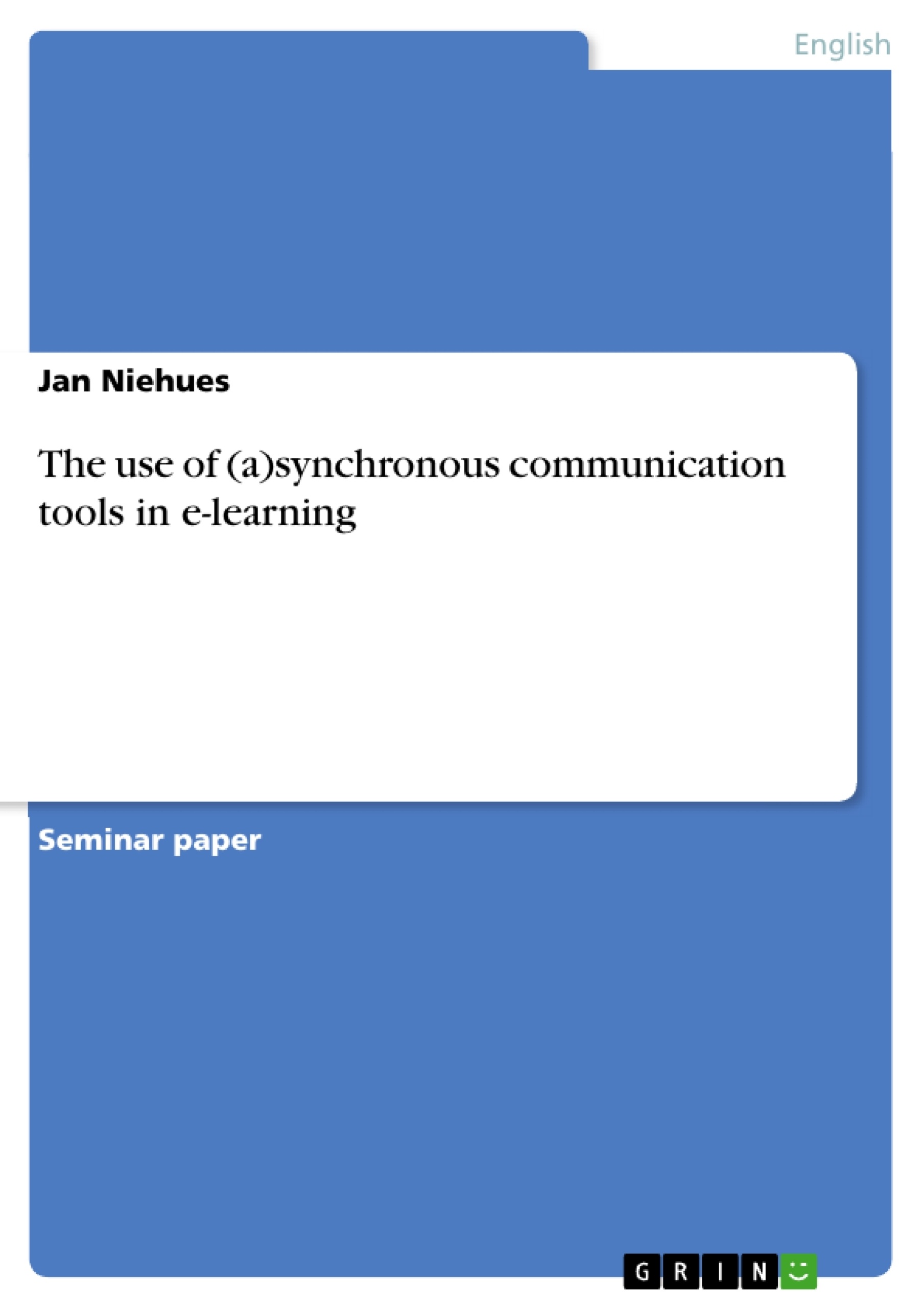This work tries to give a survey of the main communication tools, both synchronous and asynchronous that are (or have been) used in e-learning. After evaluating the respective advantages and disadvantages that are exhibited by the different modes of communication, a brief look will be taken at the social factors that may influence online communication. Concluding, several suggestions and recommendations can be made as to facilitate the use of (a)synchronous communication tools in e-learning.
Communicating with teachers and co-learners is an important factor for the conventionalisation of newly acquired knowledge (Schulmeister 2003:159), so some care should be taken to enable both students and tutors to make optimal use of the facilities for communication they are provided with, as well as to take care to offer the needed diversity in communication tools.
Table of Contents
- Introduction
- Modes of communication
- Synchronous communication
- Asynchronous communication
- Communication tools
- Synchronous communication tools
- The telephone and internet telephony
- Chat (IRC) / voice chat
- Instant messaging
- Video broadcast and conferencing
- Application sharing (Audiographics) / shared whiteboard
- Virtual worlds / MUDS
- Asynchronous communication tools
- Mail and fax
- Discussion forums / Message boards
- Synchronous communication tools
- The use of synchronous communication tools in E-Learning
- Advantages
- Disadvantages
- Summary
- The use of asynchronous communication tools in E-Learning
- Advantages
- Disadvantages
- Summary
- Social Factors
- Requirements / Recommendations
- Teacher requirements / recommendations
- Student requirements / recommendations
- Technical requirements / recommendations
- Summary
Objectives and Key Themes
This survey aims to provide an overview of synchronous and asynchronous communication tools used in e-learning, evaluating their advantages and disadvantages. The paper also examines social factors that influence online communication and offers recommendations for facilitating the use of these tools in e-learning settings.
- Synchronous and Asynchronous Communication Modes
- Advantages and Disadvantages of Communication Tools
- Social Factors in Online Communication
- Recommendations for Facilitating Communication in E-learning
- The Importance of Diverse Communication Tools
Chapter Summaries
The introduction highlights the importance of effective communication in e-learning, emphasizing the need for diverse communication tools to support both students and tutors.
Chapter 2 defines synchronous and asynchronous communication, exploring their characteristics and distinguishing features. Both modes can be point-to-point, point-to-several, or several-to-several, though the last is often limited due to information overload.
Chapter 3 provides a detailed overview of various communication tools, categorized by synchronous and asynchronous modes. Synchronous tools include the telephone, chat, instant messaging, video conferencing, application sharing, and virtual worlds. Asynchronous tools include mail, fax, email, and discussion forums.
Chapters 4 and 5 analyze the advantages and disadvantages of synchronous and asynchronous communication tools in e-learning respectively. Both chapters conclude with a summary of the key points.
Chapter 6 explores social factors that influence online communication. Chapter 7 outlines recommendations for teachers, students, and technical infrastructure to optimize the use of communication tools in e-learning.
Keywords
This survey explores synchronous and asynchronous communication tools, their application in e-learning, and social factors influencing online communication. It examines communication modes, tool features, advantages, disadvantages, and recommendations for effective implementation in educational contexts. Key concepts include conventionalization of knowledge, point-to-point communication, several-to-several communication, and the role of technology in facilitating learning processes.
- Quote paper
- Jan Niehues (Author), 2004, The use of (a)synchronous communication tools in e-learning, Munich, GRIN Verlag, https://www.hausarbeiten.de/document/52285


